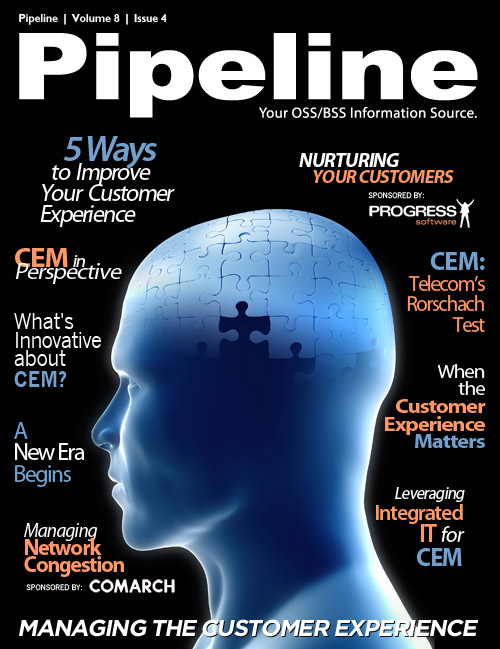CEM, to the extent that we can generalize about so unclear a grouping of technologies, is far more
concerned with user behavior and investigates this behavior through network analysis. As an overall
approach, it concerns itself with user experience, and that means network monitoring and service
assurance. It’s a holistic approach to the customer, and is, therefore, farther-reaching than traditional
CRM.
At a recent conference, an executive from a prominent North American cable company spoke about
how his company was embracing an approach to understanding the overall customer experience.
He discussed how they were seeking to enhance the enjoyment that the customer got from services
offered, and were looking for ways to grow trust and loyalty in the customer.
What did he call this approach? CRM. He went on to say that he was using the term “CRM” in a new
way, as an encapsulation of the overall relationship between customer and provider. That sounds
exactly like what we talk about when we discuss CEM, but this particular provider was so put off by the
term, or so unclear on its meaning, that he sidestepped it altogether. In all likelihood, that means that
this particular executive has been tuning out cries from vendors about the importance of CEM, because
he doesn’t seem to understand that those solutions might help him get closer to his stated goal. That’s
a failure of lexicon.
CEM is not a Panacea
We’re all leery of a cure-all. Most of the time, something that promises to cure our woes instantly
and completely, is nothing more than snake oil. Perhaps CEM can help providers understand their
customers better, but understanding alone doesn’t lead to a happier customer base.
And it’s worth remembering that higher customer satisfaction numbers don’t make for a stronger
company. In the US market, for example, T-Mobile regularly sits atop the customer satisfaction surveys.
That hasn’t stopped that company from becoming an also-ran and a target for a currently-blocked
acquisition.
Many customers are satisfied when they have the most services for the least money, and that’s no
formula for profit. There are, however, many other customers who will gladly pay more for better
service, which is especially true of business customers. However, in exchange for this extra coin,
customers expect improved experience. In situations like that:
CEM, as an approach, is not optional
In an era of increased competition, the customer is of utmost importance. Whether or not CEM is well-defined enough to be considered a fundamental technology subgrouping, it is certainly important to
consider the needs and wants of the customer.
Providers are realizing this more and more every day. Case studies are starting to emerge. Ontology
Systems, a provider of enterprise data management solutions, has announced deals with companies like
forward-looking Telenor to provide customer notification systems that inform customers when an error
has been detected and corrected. Customers face little interruption in their day-to-day operations, and
customer trust is built.
Other case studies proclaim reduced churn and reduced OPEX as a result of less call center activity and
fewer truck rolls. These business use cases have been slow in emerging, but are beginning to become
more common. One day, we’ll get a clearer picture of how the customer experience can be enhanced
and why that matters.
In the meantime, perhaps we should all attempt to tune out that buzzing sound of vendors glomming on
to a catchy phrase. The marketing machine will eventually roll on to the next thing, leaving providers to
get down to the business of better understanding the customer.










